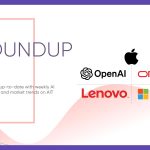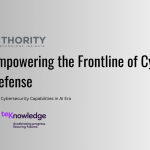In today’s business environment, connectivity defines successful and forward-thinking enterprises. They excel in integrating and making use of external data. Artificial Intelligence (AI) stands out as a transformative force, capable of enriching data sources, processes, and workflows, thereby fortifying an already efficient enterprise with a competitive edge.
Dissolving Data Silos
The ability to access and leverage data from a wide array of sources, including customers, suppliers, and other key stakeholders, signifies an organization’s robustness and agility. An “externally informed mindset,” a concept highlighted in a McKinsey report on innovation, shields companies from biases and internal politics, facilitating swift adjustments in strategies, research and development directions, and various initiatives.
Intelligently applied data not only enhances decision-making but also breaks down inefficiencies. Establishing a robust data infrastructure capable of permeating existing silos is essential. This endeavor is where AI can play a pivotal role, through the initiation of integrated data links.
The Role of Connectors and APIs
The intricacy of data integration cannot be understated. Enterprises navigate this complexity by employing a variety of application programming interfaces (APIs) and connectors, establishing links with numerous data sources. Managing these connections poses its own set of challenges. Our approach involves crowdsourcing, facilitating the reuse and adaptation of these crucial capabilities.
Our clients often engage with task-mining capabilities enabled by robotic process automation (RPA) and AI/machine learning (ML) algorithms. AI’s capacity extends further into constructing and maintaining an efficient API ecosystem.
An exciting application for Generative (Gen) AI lies in the development, optimization, and safeguarding of APIs, as demonstrated in specific sessions by Google Cloud. Such deployments can instigate a beneficial cycle, streamlining API stacks, thereby simplifying the adoption of more AI technologies. Ensuring the data’s quality is a prerequisite for its effective use.
Managing Structured and Unstructured Data
A connected enterprise navigates through a sea of both machine-generated structured (and semi-structured) data and a vast amount of human-generated unstructured data.
Structured data often flows through API-driven connections with customer relationship management (CRM) systems, enterprise resource planning (ERP) platforms, and other fundamental databases. Conversely, unstructured data, constituting up to 90 percent of all enterprise data according to an IDC report, includes inquiries, complaints, and various forms of documentation, presenting a significant challenge in data management.
The advent of natural language processing and AI technologies offers solutions for efficiently mining, organizing, and transforming this data into actionable formats, enabling enterprises to leverage this information swiftly.
Expanding AI Preparation and Processing
With RPA, automation scripts, and APIs, enterprises can establish data pipelines facilitating processes like straight-through processing, crucial for time-sensitive and volume-intensive operations across various sectors. Enhanced AI introduces additional tasks requiring more intricate human interaction and preparation, including:
- Creating data dictionaries and catalogs for comprehensive model training and intelligence.
- Developing new data architectures (e.g. data lakehouses) for improved storage and processing.
- Undertaking manual processing for quality assurance.
- Engaging in data engineering to enhance predictive capabilities.
The ultimate objective, whether developing in-house solutions or partnering with external providers, is to integrate task, work, process, document, and data insights into a cohesive platform or fabric.
Real-World Applications and Outlook
The competitive edge belongs to companies that effectively integrate and utilize all data sources, transforming unstructured data into a strategic asset. Advanced AI plays a crucial role in achieving this through API management simplification and the efficient harnessing of unstructured data.
Furthermore, AI is broadening the horizons of technological possibilities. Identifying specific business challenges should precede technical implementations. Whether the goal is to enhance customer service, augment existing ERP and CRM systems, develop new applications, or optimize supply chains, Gen AI offers boundless potential.
While the initial steps toward organizing your data may pose challenges, within a connected enterprise framework, Gen AI has the power to revolutionize the workforce with data-driven insights, supporting the need for swift, accurate decision-making in thriving organizations.
[To share your insights with us as part of editorial or sponsored content, please write to [email protected]]
The post Beyond Silos: Harnessing the Power of AI in Building Connected Enterprises appeared first on AiThority.



